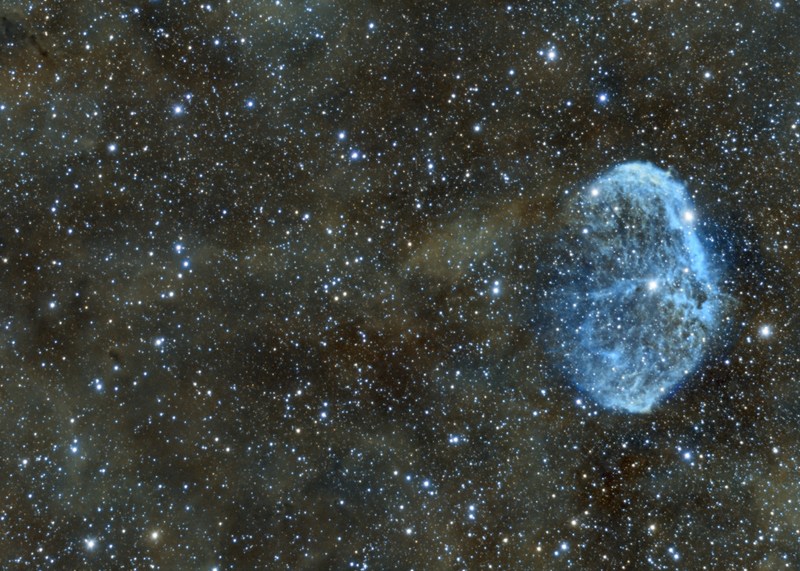Crescent and Soap Bubble Nebula
Description
"This image contains a pair of notorious objects - very bright Crescent Nebula (right) and very faint Soap Bubble nebula (top left). You will need to zoom into top left portion of the screen in order to see Soap Bubble nebula.
Discovered in 1792 by Friedrich Wilhelm Herschel, the Crescent Nebula (NGC6888, Caldwell 27, LBN 203, Sharpless 105), also known as ""Van Gogh's Ear"" is a magnitude 7.40 emission nebula in the constellation Cygnus (The Swan). It is formed by the violently fast stellar winds emanating from a Wolf-Rayet star (WR 136, HD192163) colliding with the slower gases that were shed by the same star many thousands of years ago when it was a red giant. The gaseous shell is approximately 25 light-years across and 5,000 light-years distant. It is predicted that the central Wolf-Rayet star will eventually explode into a supernova in approximately 100,000 years.
The Soap Bubble Nebula, or PN G75.5+1.7, is a planetary nebula in the constellation Cygnus, near the Crescent Nebula (NGC 6888). It was discovered by amateur astronomer Dave Jurasevich using an Astro-Physics 160 mm refractor telescope who imaged the nebula on June 19, 2007 and on July 6, 2008. The nebula was later independently noted and reported to the International Astronomical Union by Keith. B. Quattrocchi and Mel Helm who imaged PN G75.5+1.7 on July 17, 2008."
Equipment and processing
Telescope: Orion 8 inch F5
Mount: Orion Atlas
Camera: ST 8300M
Filters: Baader Ha,SII,OIII 7nm
Guiding: PHD
Processing: PixInsight
Capture software: Maxim
Exposures: Ha: bin2 52x600 OIII: bin2 43x600 SII: bin2 33x600
Location: Parsippany,NJ
